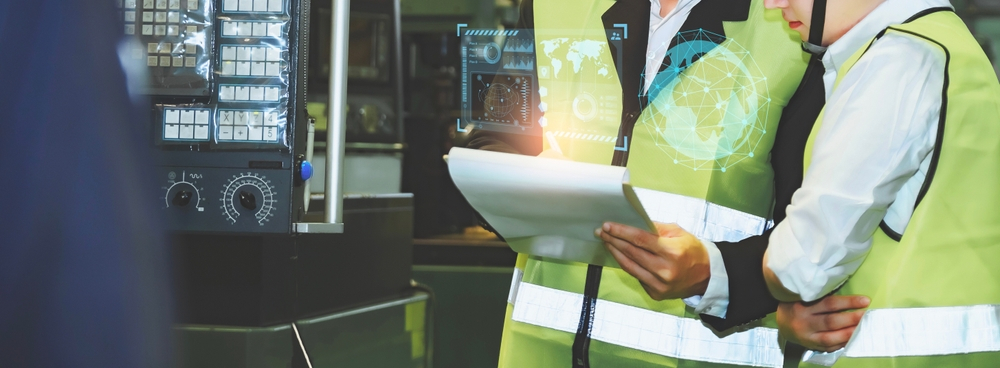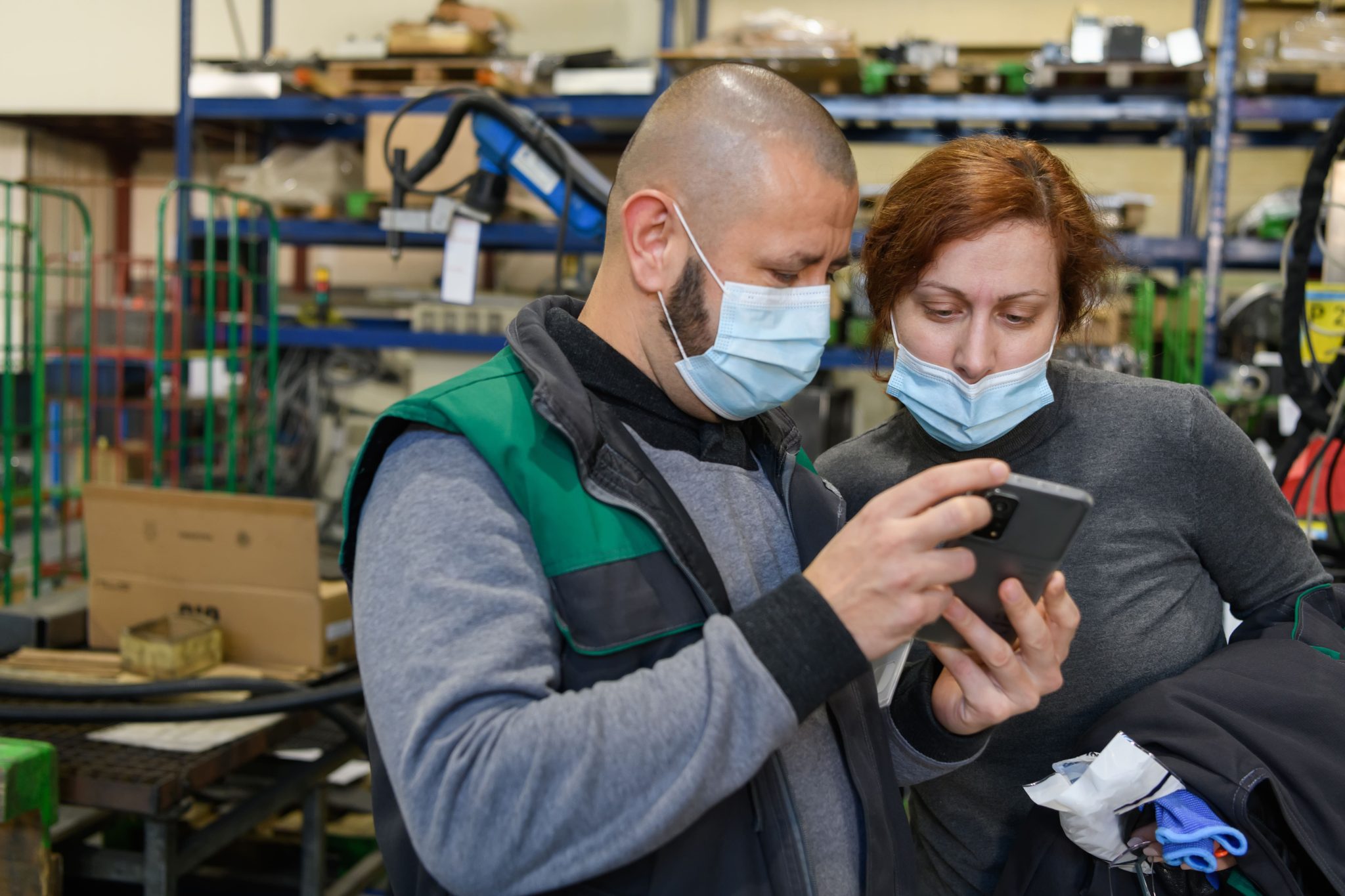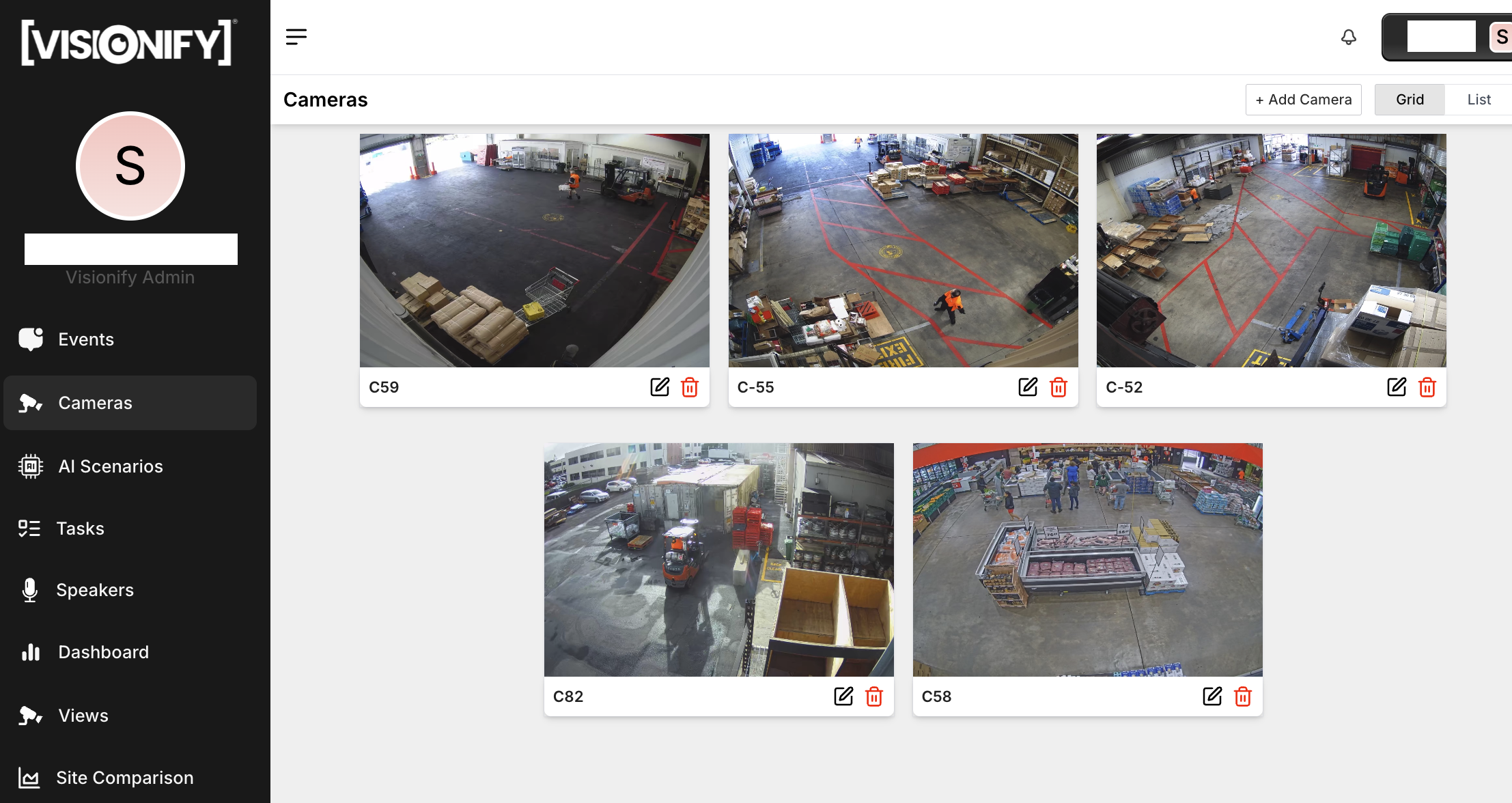Workplace Safety Made Easy: Essential Safety Tips for Workplace

See It In Action

Safety AI Software in Action
See how Visionify's Safety AI Software monitors workplace safety in real-time
Example Videos
Safety AI Software in Action
See how Visionify's Safety AI Software monitors workplace safety in real-time
Forklift Zone Monitoring with Vision AI
See how Vision AI monitors forklift zones in real-time to prevent accidents
Hard Hat Compliance in Manufacturing
Vision AI PPE Compliance for Manufacturing
Key Takeaways
- Proactive Prevention: Identifying and addressing hazards before incidents occur
- Economic Impact: Workplace accidents cost businesses billions annually in lost productivity and compensation
- Cultural Importance: Safety programs foster employee trust and engagement
- Practical Solutions: Simple safety measures can significantly reduce accident rates
- Technological Enhancement: Vision AI offers continuous monitoring capabilities that complement traditional safety approaches
Understanding the Impact of Workplace Hazards
Workplace hazards extend far beyond immediate injuries. They can result in long-term health complications, permanent disabilities, and even fatalities. For businesses, these incidents translate to significant financial losses through:
- Workers' compensation claims
- Lost productivity
- Equipment damage
- Regulatory fines
- Increased insurance premiums
- Potential legal liabilities
According to the International Labour Organization, workplace accidents and work-related illnesses annually cause over 2.3 million deaths worldwide and result in an economic cost of approximately 4% of global GDP.
 Understanding common workplace hazard indicators is essential for prevention
Understanding common workplace hazard indicators is essential for prevention
The Business Case for Workplace Safety
Investing in workplace safety isn't merely a regulatory requirement—it's a sound business decision that yields multiple benefits:
1. Protection of Human Capital
Employees are an organization's most valuable asset. Ensuring their safety demonstrates that the company values their wellbeing, which in turn fosters loyalty and engagement.
2. Cost Reduction
Preventing accidents is significantly less expensive than addressing their aftermath. A comprehensive safety program can substantially reduce costs associated with injuries, property damage, and operational disruptions.
3. Productivity Enhancement
Safe workplaces experience fewer disruptions, lower absenteeism, and higher employee morale—all factors that contribute to improved productivity and operational efficiency.
4. Reputation Management
Organizations known for their commitment to safety attract better talent, retain employees longer, and often enjoy stronger relationships with customers who value corporate responsibility.
Essential Workplace Safety Tips
1. Prioritize Proper Safety Equipment
Personal Protective Equipment (PPE) serves as the last line of defense against workplace hazards. Ensure that:
- Appropriate PPE is available for all tasks
- Equipment is properly maintained and regularly inspected
- Workers are trained on correct usage
- Compliance is consistently enforced
Remember that PPE requirements vary by task and environment—what's appropriate for one situation may be inadequate for another.
2. Create Awareness and Clear Policies
Effective safety programs depend on clear communication and established protocols:
- Develop comprehensive safety policies that address specific workplace risks
- Conduct regular training sessions to reinforce safety practices
- Use visual reminders such as posters and signage in high-risk areas
- Establish clear procedures for reporting hazards and near-misses
- Restrict the use of distractions like mobile phones in dangerous areas
3. Use Proper Tools for Each Task
Using the right equipment for the job significantly reduces accident risk:
- Ensure tools are used only for their intended purpose
- Maintain equipment according to manufacturer specifications
- Replace damaged or worn tools promptly
- Provide adequate training on equipment operation
- Install and maintain all required safety guards and devices
4. Maintain Organized Workspaces
A clean, organized workplace is inherently safer:
- Keep walkways clear of obstacles and trip hazards
- Store tools and equipment properly when not in use
- Clean spills immediately to prevent slips
- Organize storage areas to prevent falling objects
- Maintain clear access to emergency exits and equipment
 An organized workplace reduces accident risks and improves efficiency
An organized workplace reduces accident risks and improves efficiency
5. Ensure Proper Attire
Beyond specialized PPE, everyday clothing choices impact safety:
- Wear close-toed, slip-resistant footwear in industrial environments
- Avoid loose clothing that could become entangled in machinery
- Remove jewelry when working with electrical equipment or moving parts
- Secure long hair when operating machinery
- Dress appropriately for environmental conditions (heat, cold, etc.)
6. Conduct Regular Safety Inspections
Systematic safety audits help identify and address hazards before they cause harm:
- Develop comprehensive inspection checklists tailored to your workplace
- Conduct inspections at regular intervals and after any significant changes
- Include employees from different departments in the inspection process
- Document findings and establish clear timelines for addressing issues
- Follow up to ensure corrective actions are implemented effectively
Enhancing Safety with Vision AI Technology
While traditional safety measures remain essential, modern technology offers powerful tools to enhance workplace safety efforts. Vision AI (Computer Vision) represents a significant advancement in safety monitoring capabilities.
How Vision AI Transforms Safety Monitoring
Vision AI systems use artificial intelligence to analyze video feeds from standard security cameras, identifying safety concerns in real-time:
Continuous Monitoring: Unlike human observers who may experience fatigue or distractions, Vision AI systems provide 24/7 vigilance.
Immediate Detection: The technology can instantly identify safety violations such as missing PPE, unauthorized access to restricted areas, or unsafe behaviors.
Early Warning: Vision AI can detect developing hazards—such as spills, smoke, or equipment malfunctions—before they cause accidents.
Comprehensive Coverage: Multiple areas can be monitored simultaneously, ensuring no safety gaps in large facilities.
Data-Driven Insights: Over time, these systems collect valuable data that reveals safety trends and helps organizations focus their improvement efforts.
 Vision AI systems can monitor multiple safety factors simultaneously
Vision AI systems can monitor multiple safety factors simultaneously
Practical Applications of Vision AI in Workplace Safety
Vision AI is already making workplaces safer across various industries:
Manufacturing: Ensuring proper PPE usage, monitoring machine guarding, and detecting unsafe practices on production lines.
Construction: Identifying fall protection violations, monitoring structural stability, and ensuring proper equipment operation.
Warehousing: Detecting forklift safety issues, monitoring aisle clearance, and ensuring proper lifting techniques.
Chemical Processing: Early detection of leaks, spills, or abnormal conditions that could lead to more serious incidents.
Implementing a Comprehensive Safety Strategy
The most effective approach to workplace safety combines traditional best practices with innovative technologies:
-
Assess Your Environment: Identify specific hazards and high-risk areas unique to your workplace.
-
Develop Clear Policies: Create comprehensive safety guidelines tailored to your operations.
-
Train Thoroughly: Ensure all employees understand safety protocols and their individual responsibilities.
-
Leverage Technology: Implement Vision AI and other safety technologies to enhance monitoring capabilities.
-
Foster a Safety Culture: Encourage employee participation and make safety a core organizational value.
-
Continuously Improve: Regularly review and refine safety practices based on incident data and emerging best practices.
Conclusion: The Path to a Safer Workplace
Creating a safe workplace requires commitment, vigilance, and a willingness to embrace both proven practices and innovative solutions. By implementing the essential safety tips outlined in this article and exploring the potential of technologies like Vision AI, organizations can significantly reduce accident rates while improving operational efficiency.
The investment in workplace safety pays dividends not only in reduced costs and improved productivity but also in the wellbeing and engagement of your most valuable asset—your people. In today's competitive business environment, organizations that prioritize safety gain advantages in talent attraction, employee retention, and overall operational excellence.
Ready to enhance workplace safety with Vision AI technology? Contact Visionify today to learn how our solutions can help identify hazards, ensure compliance, and create a safer work environment.
Frequently Asked Questions
Find answers to common questions about this topic
Want to learn more?
Discover how our Vision AI safety solutions can transform your workplace safety.
Schedule a DemoSchedule a Meeting
Book a personalized demo with our product specialists to see how our AI safety solutions can work for your business.
Choose a convenient time
Select from available slots in your timezone
30-minute consultation
Brief but comprehensive overview of our solutions
Meet our product experts
Get answers to your specific questions
Related Articles
Subscribe to our newsletter
Get the latest safety insights and updates delivered to your inbox.


